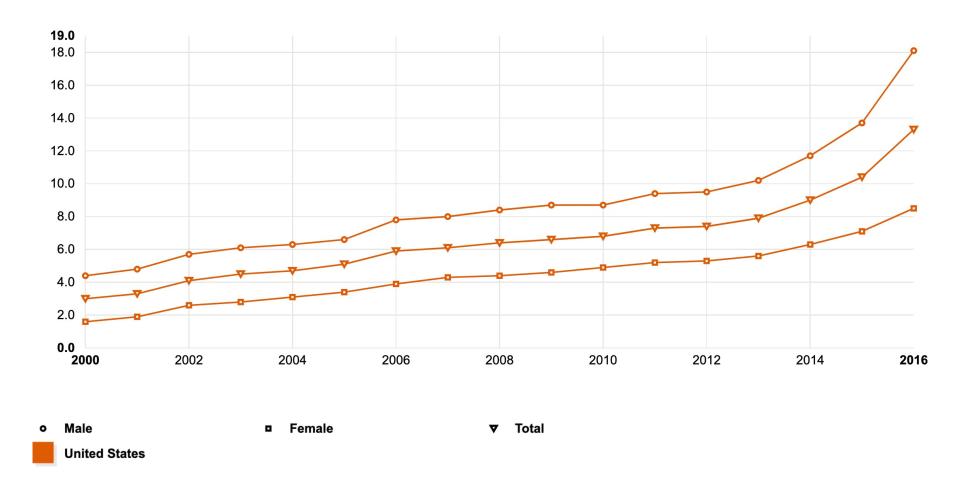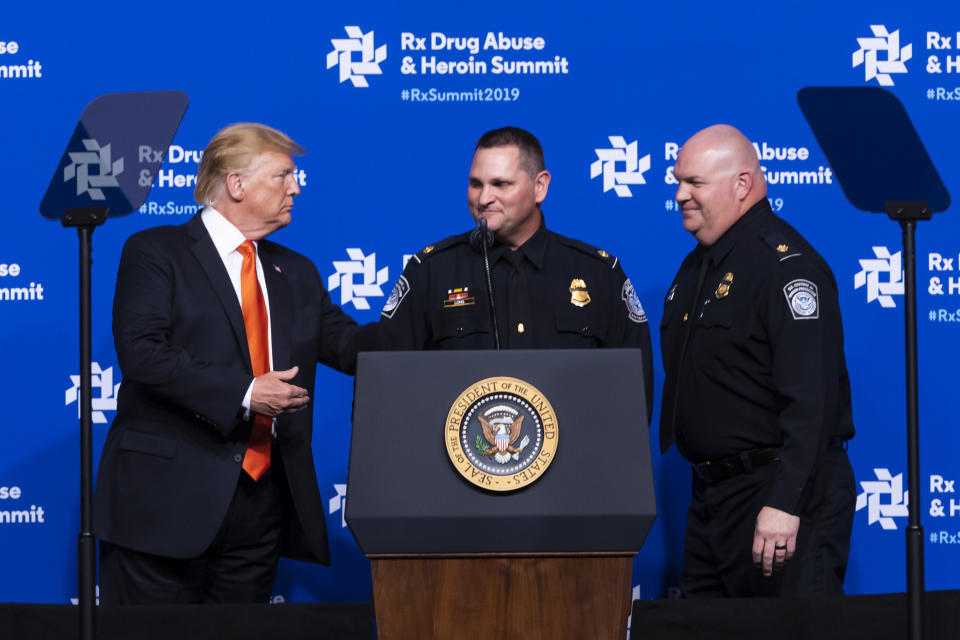'Just a piece': The U.S. opioid epidemic is costing a fortune in lost tax revenue
As state and federal authorities crack down on companies and doctors who made money by fueling the U.S. opioid epidemic, researchers are beginning to better understand other negative economic affects of the crisis.
The opioid crisis cost the U.S. about $37.8 billion in state and federal taxes between 2000 and 2016, according to a recent study by researcher at Penn State University and published in the journal Medical Care.
Researchers found that “between 2000 and 2016, opioid misuse cost state governments $11.8 billion, including $1.7 billion in lost sales tax revenue and $10.1 billion in lost income tax revenue.” On top of that, the study found, the federal government lost $26 billion in income tax revenue during that time.
“We certainly know that opioids have had a significant cost,” Joel Segel, an assistant professor of health policy administration at Penn State University and one of the authors of the report, told Yahoo Finance, “but I’m not sure we had necessarily realized it was this large. Obviously, this is just a small fraction of the total costs — just a piece.”

The data was calculated by estimating lost state income and sales tax revenue “due to the impact of opioid misuse on employment” and estimating lost income tax revenues for the federal government.
Within states, $9.5 billion was lost due to labor force exits while $0.6 billion was lost because of premature mortality.
“In addition to lost income tax revenue, most states also experience reductions in sales tax revenue when workers leave the labor force and purchase fewer goods and services,” the report states.
‘Different people on different levels’
The researchers used CDC Wonder mortality data to “calculate the lost income and sales tax revenue for each [opioid-attributable] death using the same method used for labor market exits, with the additional assumption that if a worker dies prematurely due to opioid misuse, it will eliminate tax payments in all subsequent years during the 2000-2016 time period.”
Men have been affected by opioid addiction more than women, particularly during the 2000-2016 timeframe. According to data from the Kaiser Family Foundation, the number of male opioid overdose deaths was at a rate of 4.4 per 100,000 individuals, compared to 1.6 of females, in 2000. By 2016, that number surged to 18.1 per 100,000 among men and 8.5 of females.

“I think a big piece of this is that the opioid crisis touches people in a number of different ways,” Segel said. “Obviously, there are the health effects of it. And then there are the impacts on the ability to work, what additional services they may need, and whether they have interactions with the criminal justice system. This highlights that the opioid crisis affects people on different levels.”
The federal government has recognized the broad impact of opioid addiction, so much so that President Donald Trump not only implemented legislation to tackle the crisis back in October 2018 but also declared it a public health emergency.

On April 24, Trump spoke out about the growing issue at the RX Drug Abuse & Heroin Summit. He reiterated his administration’s commitment to combating the opioid epidemic, while tying it to his calls for a border wall and tougher immigration laws.
Yahoo Finance previously reported on a recent study by the Cleveland Fed that looked at how national average opioid prescription rates affected labor force participation rates between 2000 and 2016. There were “substantial effects on prime age men and women.”
However, other experts stressed that correlation did not necessarily equal causation.
“While informative, the association does not mean that high opioid use causes reductions in labor force participation,” Molly Schnell, a postdoctoral fellow at the Stanford Institute for Economic Policy Research, told Yahoo Finance. “The causal relationship between opioid prescribing and employment is considerably weaker and murkier than popular narratives suggest.”

The Penn State study suggests that looking at economic impact of the crisis suggested that opioid-related drops in labor force participation are indeed a factor.
“By omitting lost tax revenue due to labor force exits, prior studies have missed an important component of opioid-related costs borne by state and federal governments,” the report concludes. The findings were described as a “plausibly causal estimate of the effect of opioid misuse on labor market exits.”
Adriana is an associate editor for Yahoo Finance. Follow her on Twitter @adrianambells.
READ MORE:
A 'really important piece of evidence' shows how opioids keep Americans out of the workforce
FDA opioids adviser: 'One thing is clear' about the ongoing crisis
Pharma CEO: 'This opioid crisis has become a fentanyl crisis'
Follow Yahoo Finance on Twitter, Facebook, Instagram, Flipboard, SmartNews, LinkedIn, YouTube, and reddit.
